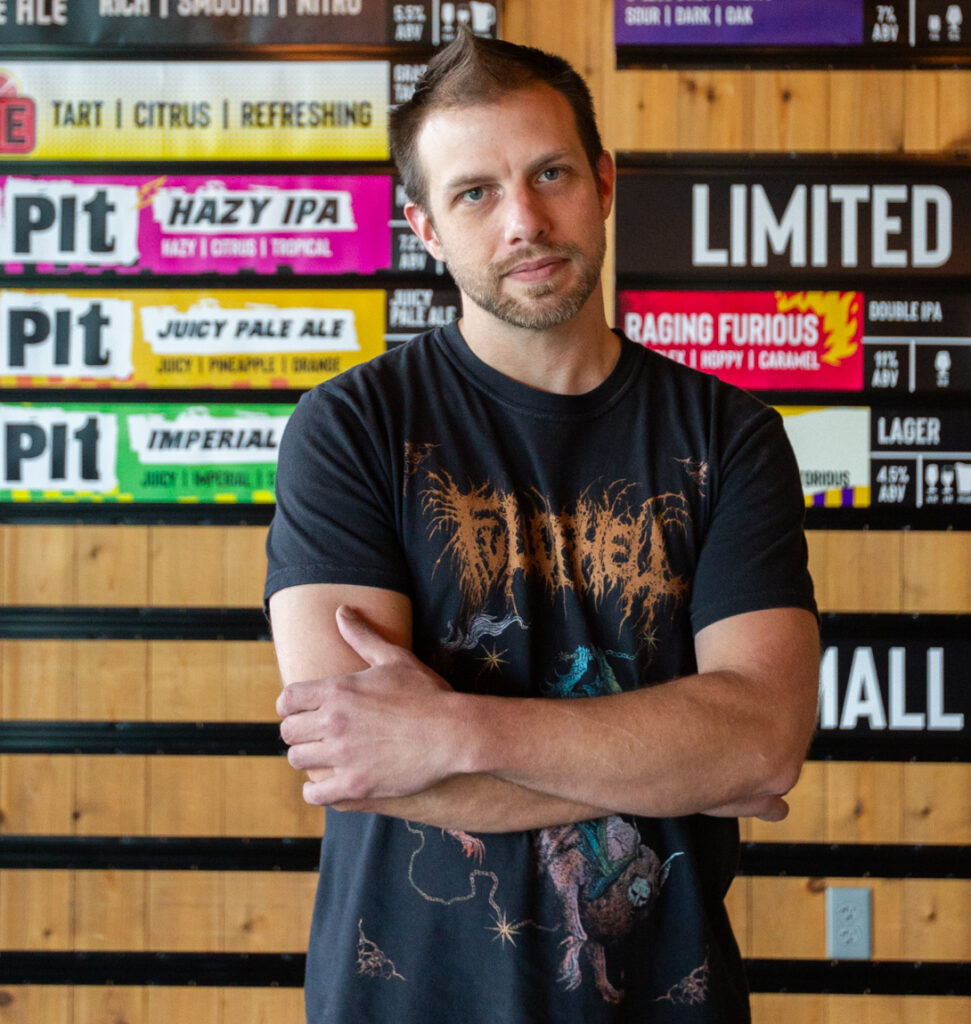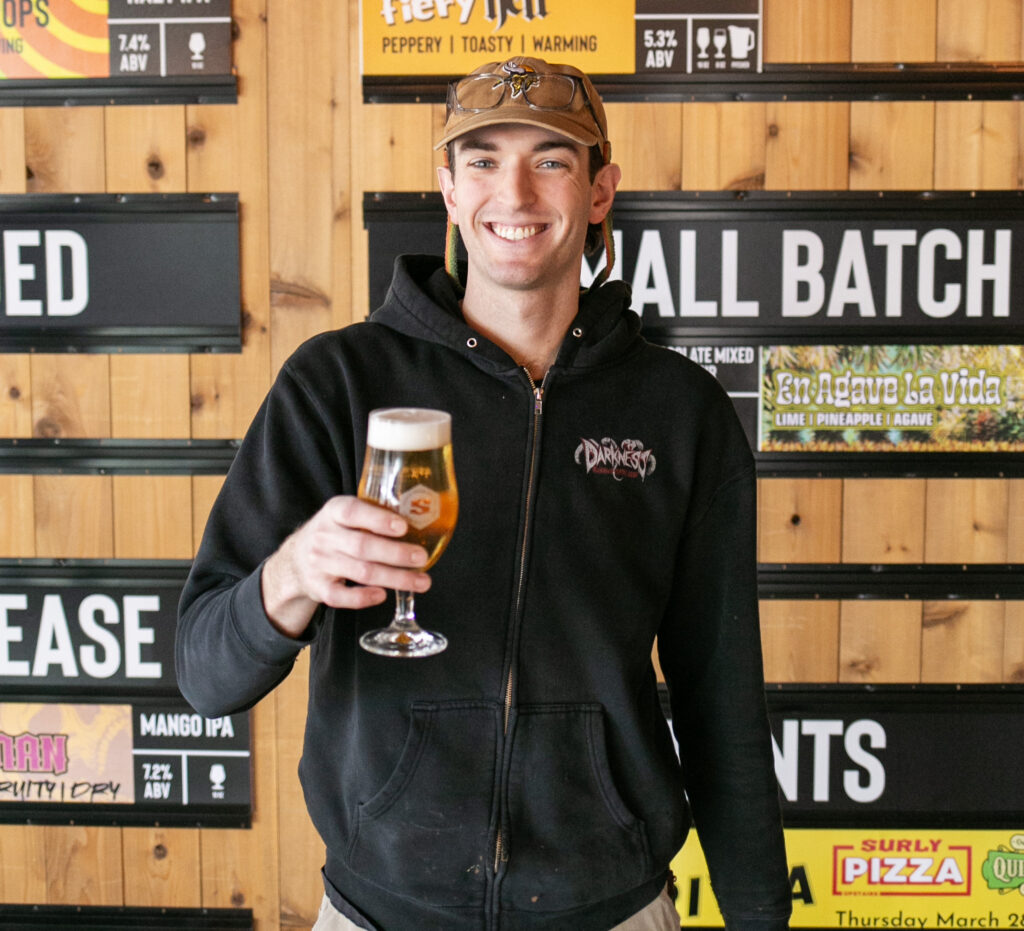Our latest Intelligent Design* offering comes from brewer Kevin Garey, who took inspiration from a drink named after a legendary golfer. No, not Happy Gilmore. Please read for more information about Kevin’s path to Surly and the story behind Bogey Beer.
*If you’re unfamiliar, Intelligent Design is the name of our brewer-driven series of beers, wherein a brewer develops a beer concept and work with the Head Brewer and Brand Development team to bring that beer to life as a tap in the Surly beer hall. The entire process mimics Surly’s R&D process for developing new brands to bring to market, from brewhouse logistics to scaling up recipes to consumer appeal.
First of all, who are you, where are you from, what is your job title, and how long have you worked at Surly?
My name is Kevin Garey, I’m from Tampa, Florida, and I’m a shift brewer at our MSP brewery. I’m celebrating my one-year anniversary next month.
How did you get into brewing?
I first got into the industry as a volunteer at Orpheus Brewing in Atlanta, shortly after they opened their tasting room in late 2014. I poured beer, helped with special events, and started researching the science behind brewing in my free time. It didn’t take long before I was homebrewing nearly every week, and within a year I was spending off days working in the QA lab at Orpheus. I found myself moving back to Tampa, and by then I was determined to make the switch to full-time brewing. I started on a 4-barrel system in the back of a homebrew shop, then worked as a brewer for both Coppertail Brewing in Tampa and Commerce Brewing in Largo before getting an offer from Surly.
What, exactly, is a Bogey Beer?
Simply put, it’s an Arnold Palmer-inspired sour ale. It tastes like a glass of lemonade with a big splash of tea, and it pairs perfectly with a sunny day on the course.
What was your inspiration for making it?
I’ve always had a passion for sour beer, and I knew I wanted to make one for Surly that would stand out in the portfolio. I also wanted to experiment with Lallemand’s Sourvisiae yeast, and this project gave me plenty of opportunity to collect data on it. Sourvisiae is a relatively new ale strain that produces lactic acid during active fermentation, which solves some of the problems associated with traditional kettle souring methods – specifically, production delays and stalled fermentations.
What kind of hop/malt bill did you go with?
The malt & hop bill are very traditional for the Berliner Weisse style – pretty much a 50/50 split between German pilsner malt & wheat, with just a pinch of Sterling hops. Lastly, and most importantly, is the tea. I made a blend of Earl Grey and Earl White teas, locally sourced by Mrs. Kelly’s Tea Room in Northeast Minneapolis. They were incredibly helpful!
What kind of flavors/aromatics should drinkers expect?
The tea should jump out of the glass and be immediately noticeable. The white tea provides notes of lemon zest and bergamot while the black tea balances it out with a heavy tannin aroma. The souring yeast provides the tart and mouth-puckering acidity of fresh lemons. The finish is dry and crisp, making it a sessionable thirst quencher at 5% ABV.
If there’s anything else you’d like the drinking public to know about the beer, please tell them now:
There has been a lot of debate over the name of this beer! A bogey is a shot above par, which is always a bad thing in the golf world – but in the craft beer world, we aim to make beer that’s above par. Hence: Bogey!


